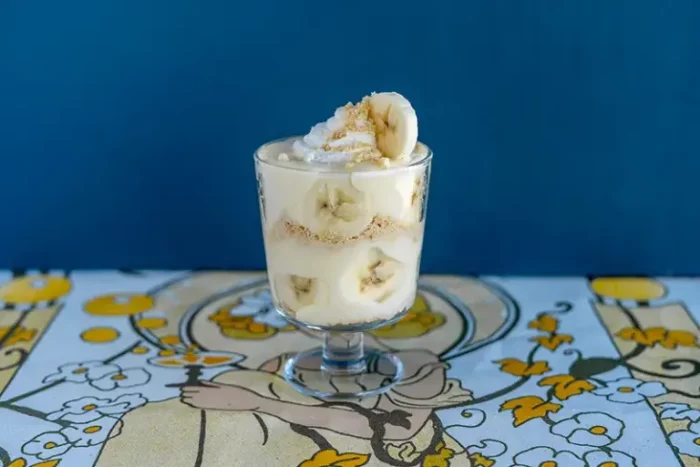Magnolia Dessert is a term that evokes a sense of elegance, indulgence, and a touch of the exotic in the world of sweet treats. It has a charm that has captured the hearts and taste buds of many, yet it might not be as universally known as some more common desserts. This comprehensive essay will take you on a deep exploration of what Magnolia Dessert truly is, delving into its origins, the different forms it can take, the unique ingredients that make it special, and its place in various culinary traditions. Whether you’re a dessert aficionado or simply curious about new and delightful confections, this exploration of Magnolia Dessert is sure to satisfy your interest.
Origins and History of Magnolia Dessert
Geographical Roots: The exact origin of Magnolia Dessert is somewhat shrouded in mystery, but it is believed to have connections to regions where magnolia trees are prevalent and hold cultural significance. Magnolia trees are native to parts of Asia, including China and Japan, as well as the southeastern United States. In these areas, the beauty and fragrance of the magnolia flower have long inspired various aspects of local cultures, including cuisine.
In Asia, the delicate and alluring nature of the magnolia might have influenced the creation of a dessert that aimed to capture its essence in edible form. For example, in Chinese cuisine, there has always been a tradition of using floral elements in cooking and creating sweet treats. The magnolia’s symbolic value, often associated with purity and nobility, could have led chefs and home cooks alike to experiment with incorporating it into something delicious.
Similarly, in the southern United States, where magnolia trees are iconic and adorn many landscapes, it’s possible that local bakers and cooks were inspired by the flower to develop a unique dessert. The South has a rich history of creating indulgent and flavorful desserts using local ingredients, and the magnolia could have been one such ingredient that found its way into a special confection.
Ingredients Used in Magnolia Dessert
Fresh Magnolia Petals: The star ingredient in Magnolia Dessert is, of course, the fresh magnolia petals. It’s crucial to use petals that are sourced from magnolia trees that have not been treated with pesticides or other harmful chemicals. Different species of magnolia have petals with slightly varying flavors and fragrances. For example, the Southern Magnolia (Magnolia grandiflora), common in the southeastern United States, has large, thick petals with a sweet and slightly citrusy aroma. In contrast, some Asian species might have a more delicate, floral scent.
When using the petals, they are typically handled with care. They can be rinsed gently under cold water to remove any dirt or debris, but it’s important not to soak them for too long as this might wash away some of their precious flavor and fragrance. As mentioned earlier, they can be used in various ways, from steeping in liquids to being incorporated into sugar to infuse it with their essence.
Sweeteners: A variety of sweeteners can be used in Magnolia Dessert, depending on personal preference and the specific recipe. Granulated sugar is a common choice for many of the traditional preparations, such as making magnolia-infused sugar for cakes or when creating syrups for fillings or infusions. However, for those looking for a more natural or less processed option, alternatives like honey, maple syrup, or agave nectar can be used.
Culinary Techniques Involved in Making Magnolia Dessert
Infusion and Steeping: The process of infusion and steeping is central to capturing the essence of the magnolia in many of the desserts. As mentioned earlier, for infusing liquids like milk, cream, or syrups with magnolia flavor, the fresh petals are added to the warm liquid and left to steep. This allows the natural oils and fragrances in the petals to transfer into the liquid. The temperature of the liquid, the length of the steeping time, and the quantity of petals used all play a role in determining the intensity of the flavor.
For example, if you want a more subtle magnolia note, you might use a smaller amount of petals and steep for a shorter period, say around 15 minutes in warm (but not boiling) liquid. On the other hand, if you’re aiming for a bold and pronounced floral flavor, you could increase the number of petals and let them steep for up to 30 minutes or even longer in some cases. After steeping, the petals are carefully strained out using a fine-mesh sieve or cheesecloth to remove any solid pieces, leaving behind the infused liquid ready to be used in the recipe.
Baking and Cooking Temperatures: In the case of baked Magnolia Desserts like cakes, cupcakes, and pies, getting the right baking temperature is crucial. For cakes and cupcakes, a typical baking temperature might range from 325°F to 350°F (163°C to 177°C). Baking at a lower temperature for a slightly longer time can help ensure that the inside of the cake bakes evenly without the outside getting too brown or dry too quickly. This is especially important when using magnolia-infused ingredients, as you want to preserve the delicate flavor.
Flavor Profile and Taste of Magnolia Dessert
Floral Notes: The most distinctive feature of the Magnolia Dessert’s flavor profile is its floral notes. The magnolia petals impart a delicate, fragrant essence that is both sweet and slightly citrusy in some cases. It’s not an overpowering flavor but rather one that lingers on the palate, adding a touch of elegance and sophistication. When you take a bite of a magnolia-infused pudding or a slice of cake, the floral aroma hits your nose first, and then as you taste it, the flavor unfolds, creating a unique and memorable eating experience.
The floral notes can vary depending on the type of magnolia used and the preparation method. For example, if the petals are steeped for a longer time or a larger quantity is used, the floral flavor will be more intense. In contrast, a lighter infusion might result in a more subtle hint of magnolia that blends harmoniously with other ingredients like vanilla, lemon, or the natural flavors of fruits in the dessert.
Complementary Flavors: To enhance the magnolia flavor and create a more balanced taste, various complementary flavors are often paired with it. Vanilla is a classic choice that works well with the floral notes, adding a warm and creamy undertone. Lemon or other citrus flavors can cut through the slight richness of the dessert and brighten the overall taste. In ice creams and sorbets, a touch of citrus juice can make the magnolia flavor pop and give it a refreshing edge.
Conclusion
The Magnolia dessert is a testament to the creativity and diversity of global cuisine. Its unique combination of flavors and textures, along with its visually striking presentation, makes it a favorite among dessert lovers. Whether enjoyed as a refreshing treat on a hot day or as a sophisticated dessert to end a meal, the Magnolia dessert is a delightful addition to any dessert repertoire.
Related Topics:

























